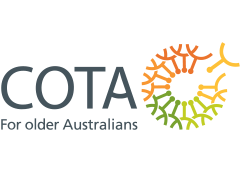COVID-19 rebound – what is it?
The Australian Government has adopted COVID-19 antiviral treatments as the best way to protect older Australians who contract the virus.
- Jump To Section:
- What do the treatments do? •
- What is COVID-19 rebound? •
- Should I be worried?
![Some people are experiencing COVID-19 rebound, where they begin having symptoms again two to eight days after being cleared. [Source: iStock]](https://agedcareguide-assets.imgix.net/news/articles/wp/12_8_2022-COVID-rebound.jpg?fm=pjpg&w=700&format=auto&q=65)
Some people are experiencing COVID-19 rebound, where they begin having symptoms again two to eight days after being cleared. [Source: iStock]
Key points:
- Antiviral treatments are an important part of the Federal Government’s plan to protect older Australians who are infected with COVID-19
- Antiviral treatment ‘rebound’ is when you start experiencing symptoms again after being cleared from COVID-19
- Experts say COVID-19 rebound is also happening in people who don’t take antivirals to treat the virus
Aged care facilities now have antivirals on site ready to use when residents get infected with COVID, and older people in the community have cheaper access to the treatments through the Pharmaceutical Benefits Scheme (PBS).
Using antivirals can greatly improve your condition when infected with COVID-19. However, recent data has shown that some people are experiencing a “rebound” effect following the use of antivirals.
So what exactly is a COVID-19 antiviral “rebound”?
What do the treatments do?
At the moment, antiviral treatments are only available for COVID-19 positive people who are:
- 70 years or older
- 50 years or older with two risk factors
- 30 years or older with two risk factors if you are an Aboriginal or Torres Strait Islander person
Risk factors include living in aged care or supported accommodation, living with disability or multiple health conditions, living with neurological conditions like dementia, having diabetes, heart failure or heart disease, kidney failure, or respiratory conditions, or living in a remote area that doesn’t have access to regular healthcare.
There are two antiviral oral treatments approved in Australia, Lagevrio® (molnupiravir) and Paxlovid® (nirmatrelvir + ritonavir).
These treatments are both effective at treating people over the age of 18 who have mild to moderate COVID-19 symptoms.
The aim of the antivirals is to take them as soon as possible into your COVID-19 infection period, as it will reduce the likelihood of you experiencing severe symptoms.
Antiviral medications are able to target the COVID-19 virus in your body and reduce or prevent the virus from multiplying in your body and infecting healthy cells.
Utilising antivirals means your immune system is better able to fight off the virus in your body, as well as stop it from spreading further in your own body.
Since antivirals reduce severe symptoms you may experience with COVID-19, it can reduce or lessen the likelihood of you:
- Needing to go to hospital
- Developing breathing problems
- Needing oxygen assistance or intensive care
- Dying from COVID-19
You can learn more about the antiviral treatments in our article, ‘What COVID-19 treatments are available?‘
What is COVID-19 rebound?
It is not exactly known why rebound may be occurring and experts are still researching into the phenomenon.
Having COVID-19 rebound shouldn’t be considered as getting reinfected with the virus.
‘Rebounding’ refers to when you have symptoms return or are returning positive rapid antigen tests (RATs) again after being initially ‘cleared’ for the virus – when you return negative tests or have no symptoms.
Reports have shown that it can take anywhere between two to eight days for you to ‘rebound’, and this can occur in people who have taken the Paxlovid or Lagevrio antiviral medication. However, this is also occurring in people who do not take antivirals.
Keep in mind, this doesn’t happen to everyone who takes antiviral medication to treat COVID-19. One study, that is not yet peer-reviewed, found that rebounds only occur in 12 percent of people taking Paxlovid.
But rebound does seem to be more common among older people who take the antiviral medication.
Should I be worried?
A recent study (still to be peer-reviewed) seemed to find that rebounding means relatively mild to moderate symptoms for people that do experience it.
Additionally, the same study found that rebound was still happen among people that hadn’t taken antiviral medication.
If you do experience rebound from taking antiviral medication, you may see the return of a runny nose, sore throat, or the “COVID cough”.
But hospitalisations and severe reactions or symptoms due to antiviral rebounds seem to be very low.
Associate Professor Paul Griffin, Infectious Diseases Physician and Microbiologist, says that the reports about rebound are an important part of understanding the success of the antiviral treatments but should not put people off from using this approach to treating COVID-19.
Especially when antivirals, like Paxlovid, have shown they can be 89 percent effective at preventing people at risk of serious COVID-19 illness from being admitted to hospital or dying.
If you do rebound and are experiencing symptoms, remember that you might still be infectious with the virus and may need to isolate for longer.
Have you experienced a COVID-19 antiviral rebound? Tell us in the comments below.
Related content:
What COVID-19 treatments are available?
COVID-19 vaccines and what you should know
Importance of getting a COVID-19 vaccine as an older person




![Not only is incontinence often preventable, there are treatments to fix the problem if you develop it. [Source: Shutterstock]](https://agedcareguide-assets.imgix.net/news/articles/wp/12_7_2021-Incontinence.jpg?fm=pjpg&w=162&h=124&q=80)
![Diabetes occurs when the body can no longer produce enough insulin to convert sugar into energy. [Source: iStock]](https://agedcareguide-assets.imgix.net/news/articles/wp/2_11_22_diabetes.jpg?fm=pjpg&w=162&h=124&q=80)
![If you’re after government-funded support, you’ll need to be assessed. [Source: iStock]](https://agedcareguide-assets.imgix.net/news/articles/wp/ACATACAS__3010.jpg?fm=pjpg&w=162&h=124&q=80)
![Learning about how much it may cost you to receive aged care will help you to refine your fiscal planning. [Source: iStock]](https://agedcareguide-assets.imgix.net/news/articles/wp/nursinghomecosts__111.jpg?fm=pjpg&w=162&h=124&q=80)


